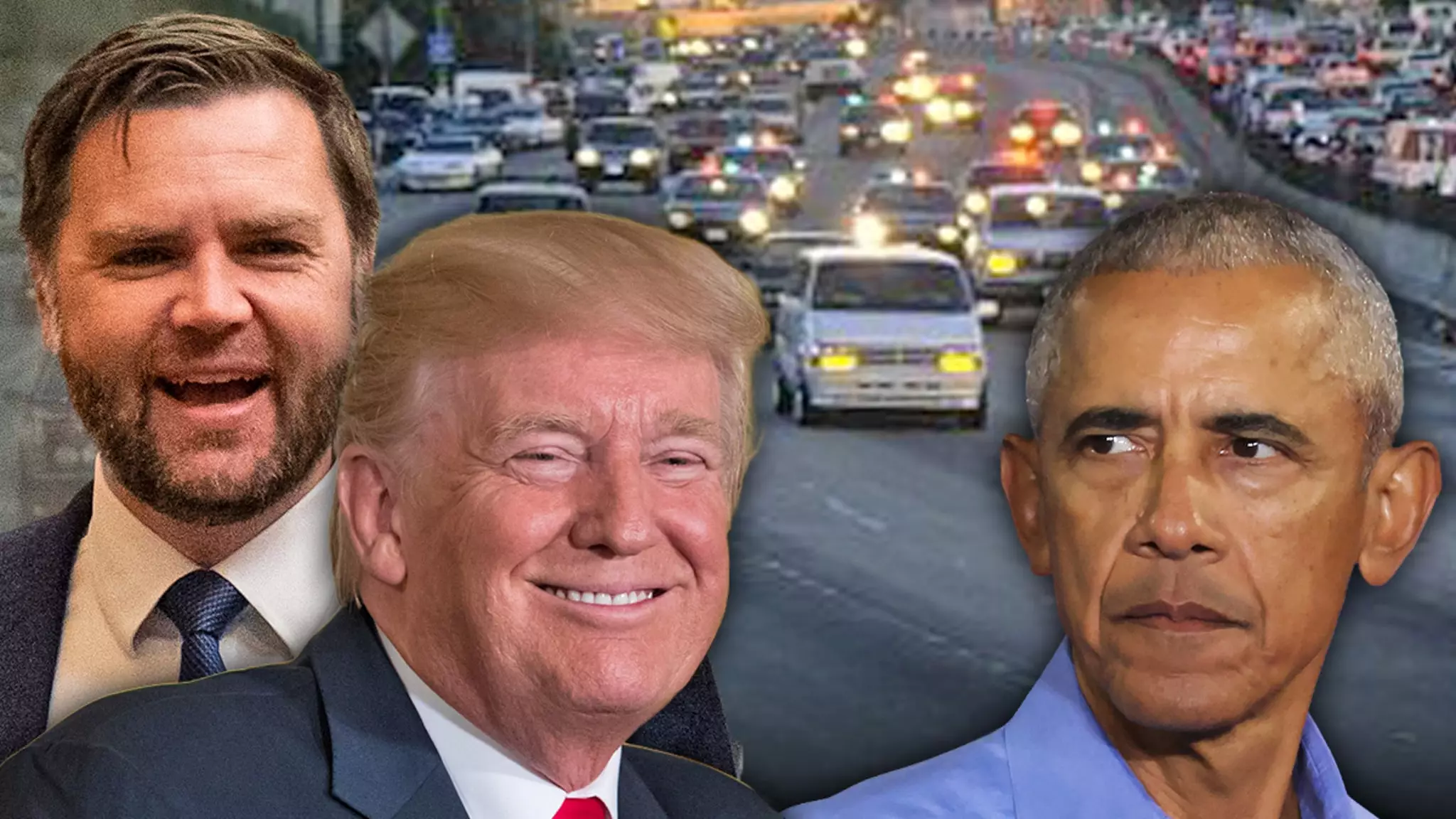In an era where digital platforms serve as the primary battleground for political discourse, leaders increasingly leverage provocative content to sway public opinion and assert dominance. President Donald Trump’s latest social media post exemplifies this trend—using a meme depicting a notorious police chase to symbolize political rivalry. This act transforms the digital realm into a stage for symbolic warfare, highlighting how social media has become a potent tool for shaping narratives beyond traditional political channels.
Rather than engaging in conventional debate or policy discourse, the post employs visual satire to ridicule opposition figures and amplify partisan sentiments. The insertion of former President Obama into the infamous O.J. Simpson police chase image signifies a stylized confrontation that stokes emotional reactions rather than rational discussions. Such tactics reflect a shift toward what can be called “visual political branding,” where memes and edited images serve as modern propaganda devices, reinforcing allegiances and fueling conflict.
The Blurring of Facts and Fiction in Political Warfare
This meme is more than mere humor; it is intertwined with ongoing political scandals and allegations. The post implicitly aligns with narratives that cast the Obama administration—specifically, its handling of Russia-related election interference—as part of a treacherous conspiracy. While no concrete evidence has emerged to prove these claims, their persistence fuels division and distrust among the electorate.
What makes this phenomenon particularly troubling is the susceptibility of the public to caricatured narratives. The meme condenses complex geopolitical issues into a simplistic visual metaphor, reducing nuanced diplomatic affairs to a juvenile chase scene. This simplification safeguards political allies’ interests by dismissing detailed investigations and facts, instead fostering a climate where perception often trumps truth. The dynamic thus exemplifies how misinformation and visual sensationalism distort public understanding and undermine the foundational principles of rational debate.
The Cultural Impact of Political ‘Stunts’
President Trump’s use of humor and satire as political tools underscores the broader cultural shift towards entertainment-driven politics. When leaders resort to meme culture and provocative imagery, they appeal directly to the emotions of their base—often at the expense of substantive policy discussion. This approach capitalizes on quick reactions and viral engagement, which can be more influential than traditional forms of communication.
However, this approach raises questions about accountability and the erosion of civil discourse. When political debates are reduced to meme wars and social media skirmishes, the complexity of governance and the importance of factual accuracy risk being overshadowed by spectacle. The line between parody and reality becomes blurred, fostering an environment where leaders are as much entertainers as policymakers. In this landscape, the power of image manipulation becomes a double-edged sword—capable of rallying support but also destabilizing democratic norms through manipulation and manipulation-inspired polarization.
The Dangerous Demagoguery of Modern Politics
Ultimately, these digital antics reveal a deeper issue: the strategic use of outrage and mockery to manipulate the political theater. When a meme referencing an infamous police chase is used to attack political rivals, it exemplifies how political figures now harness symbols of chaos and controversy to reinforce their narratives. Such tactics serve to delegitimize opponents, sideline meaningful debate, and deepen societal divides.
This evolving style of political communication exposes a dangerous tendency—reducing complex issues to sensationalist images and soundbites that resonate emotionally but lack substantive engagement. If unchecked, this trend threatens to diminish the capacity for sincere dialogue and respectful disagreement, fostering an environment where power is maintained through spectacle rather than policy. As voters and observers, it’s crucial to maintain a critical eye, recognizing when visual manipulation is serving as a smokescreen for deeper issues or as a weapon for cheap political gains.

Leave a Reply